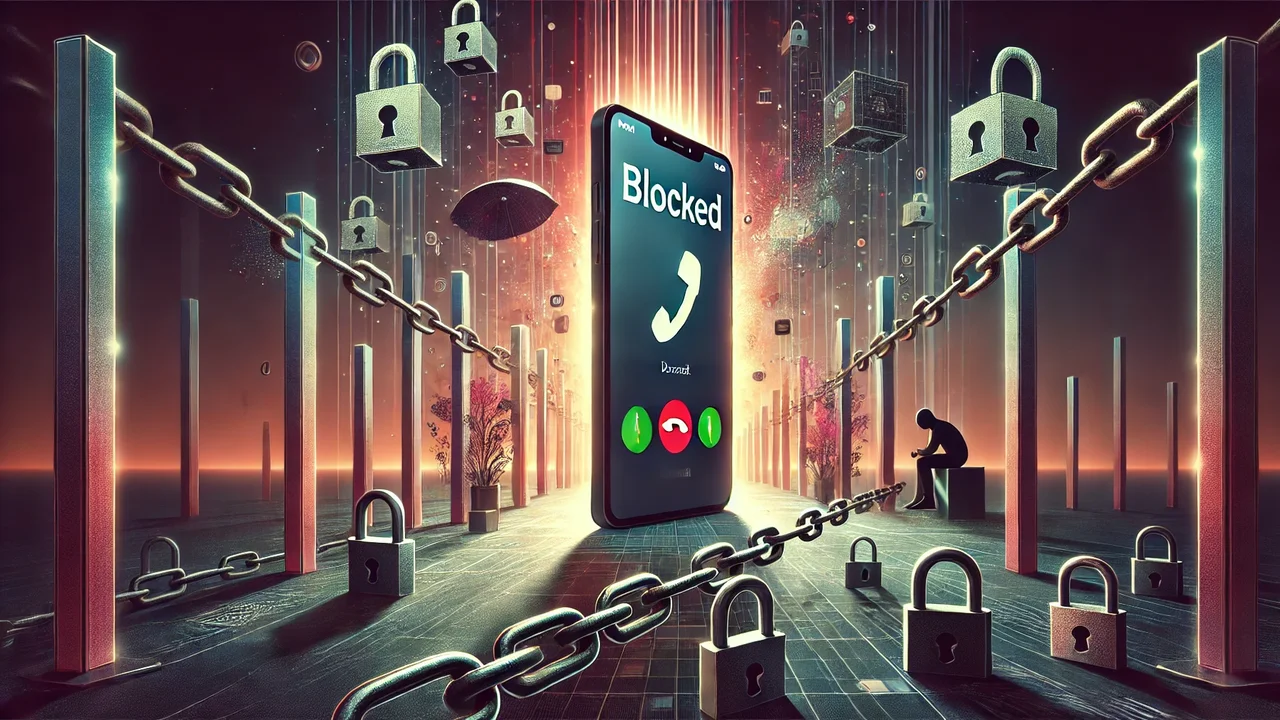How to Call Someone Who Blocked You: A Comprehensive Guide

Introduction
It can be quite perplexing and annoying when someone blocks you. How to Call Someone Who Blocked You provides insights into navigating this challenging situation. You may be confused about what to do if you find out that your number has been blocked, whether it’s because of an argument, a misunderstanding, or a personal decision. Reestablishing contact may be necessary in certain circumstances, but doing it in an ethical and polite manner is of the utmost importance.
Practical strategies and ethical considerations are discussed in this article on how to contact someone who has blocked you. Connect with respect and stay on the right side of the law with the help of this book’s expert advice and practical techniques.
What Does Being Blocked Mean?
A block indicates that the person has decided to stop communicating with you directly. Any number of digital communication tools, including regular phone networks and social media, are susceptible to this. Blocking someone shows that they want to keep their distance by preventing calls, messages, or alerts from reaching them. The importance of this cannot be overstated, since unauthorizedly navigating around a block could result in boundary violations and even legal ramifications.
Understanding Why You Were Blocked
Reflecting on the Relationship Dynamics
Think about your connection with the blocked person before trying to get in touch with them. Did the block start because of an argument, a misunderstanding, or some other persistent problem? You can figure out if it’s worth it to try to reconnect or if you should just respect their desires by reflecting on the situation.
Recognizing the Importance of Boundaries
As a clear barrier, blocking is often useful. No matter how long it lasts, it always serves as a reminder that the other person needs space. Your maturity and honesty will be on display if you honor this decision.
Considering Alternative Communication Methods
Think about other options, such as email, mutual friends, or professional mediators, if getting in touch is very important. Without explicitly evading the barrier, these can offer neutral forums for communication.
Avoiding Desperation or Harassment
It could be seen as intrusive or even harassing to try to contact someone multiple times after they have blocked you. Maintain a calm demeanor that is respectful of others and compliant with the law.
Methods to Call Someone Who Blocked You
Hiding Your Caller ID
Hide your caller ID by setting your number to “Private” or “Unknown.” This will allow you to circumvent blockers.
How to Hide Your Caller ID on iPhone
Turn off the display of your caller ID on your iPhone by going to the Settings menu, then selecting Phone. When you make a call out, your number will now show as private.
How to Hide Your Caller ID on Android
To hide your number from being visible in caller ID, launch the Phone app on your Android device. Then go to Settings > More Settings (or Additional Settings). From there, choose Hide Number.
The Method’s Restrictions
Even if it works, many individuals just reject calls from numbers they don’t know. Furthermore, this feature might not be supported by all carriers or areas.
Using a Prefix Code
You can hide your caller ID in several regions by prefixing the recipient’s number with a code, like *67. The United States is a country where this is very typical.
*Steps to Use 67 Code
All you have to do is call *67, then enter the number you wish to contact. To the receiver, the call will seem like a “Unknown” or “Private” message. Just a heads up, this strategy might not fly on some airlines or in other foreign countries.
Ethical Implications of Caller ID Blocking
Despite its effectiveness, this strategy has the potential to be misleading. Avoid using it for intimidating or harassing purposes and only use it when you have a legitimate reason to communicate.
Using Alternative Numbers
Borrowing a Friend’s Phone
Using a friend’s phone or another unknown number can be a simple way to contact someone. Get the owner’s OK before phoning, and be sure to clarify why you need to reach them.
Using Virtual Numbers or Apps
One can create a virtual phone number for making phone calls or sending text messages using services such as Google Voice or TextNow. If you need to remain anonymous for work or other reasons, this can be a lifesaver.
Temporary Phone Numbers for Privacy
For quick and easy one-time messaging, you can find disposable numbers in some apps. Particularly useful if you value your privacy and would like to be anonymous when contacting.
Legal and Ethical Considerations
There should be no invasion of privacy or lack of consent while using alternate numbers. Contact should always be accompanied by a valid purpose.
Internet-Based Calling Options
Using VoIP Services
Internet Protocol (VoIP) phone services, such as Facebook Messenger, Skype, or WhatsApp, do not rely on conventional phone networks. These platforms provide a practical means of connection, provided that you are not blocked.
Advantages of VoIP Apps
VoIP apps often don’t cost anything, are available everywhere, and offer capabilities like video calling and messaging.
How to Check If You’re Blocked on VoIP Apps
Finding out if you’re blocked becomes apparent when you try to send a message or make a call. For instance, with WhatsApp, a recipient’s profile picture, status, and last saw timestamp cannot be viewed by prohibited contacts.
Limitations of VoIP Communication
A working internet connection and the appropriate app are necessities for both sides. Not using this option means the person has blocked you on the platform as well.
Leaving a Voicemail
Can You Leave a Voicemail If Blocked?
Voicemails can still be left by blacklisted numbers in some situations. Typically, these voicemails are saved in a distinct category, like “Blocked Messages.”
How to Leave an Effective Voicemail
Remember to be succinct, polite, and direct when communicating. Make your intentions clear and let them know that you will honor their space.
When Voicemails Are Appropriate
Voicemails are great for business or critical situations, but they aren’t necessarily the method to handle personal matters—particularly if the block was deliberate.
Risks of Leaving Voicemails
The receiver might think it’s an infringement of their privacy or decide to disregard the voicemail altogether. Consider all potential outcomes before moving forward.
Conclusion
Calling someone who has blocked you is a sensitive matter that requires careful consideration. While there are ways to reach out, such as hiding your caller ID, using alternative numbers, or leaving voicemails, it is essential to respect the other person’s boundaries and intentions. Misusing these methods can harm relationships and may even lead to legal consequences
Must Read: Splat Guns: A Revolutionary Gel Ball Blaster Experience
FAQs
How to Call Someone Who Blocked You?
To call someone who has blocked you, consider hiding your caller ID, using a different phone number, or reaching out through internet-based calling apps like WhatsApp. However, always respect the other person’s boundaries and approach the situation ethically to avoid any legal or personal conflicts
Can You Use WhatsApp to Contact Someone Who Blocked You?
If you’re blocked on WhatsApp, you cannot send messages, make calls, or view the person’s profile updates. Using a new account to contact them may be considered intrusive.
Is It Illegal to Call Someone Who Blocked You?
Repeatedly attempting to contact someone who has blocked you may lead to legal consequences, such as harassment charges. Always act within the bounds of the law.
Are There Ethical Ways to Reconnect After Being Blocked?
Yes, ethical methods include sending an email, reaching out through mutual contacts, or waiting for the other person to initiate communication.
Can You Bypass a Block Using Google Voice?
Google Voice can provide an alternate number for calling, but bypassing a block without permission may breach ethical and legal boundaries.

Nancy Albret is a dynamic blogger for Magzinely.com, exploring a variety of subjects from technological innovations to cultural perspectives. Her writing sheds light on how modern living intertwines with enduring traditions and the newest developments in technology for efficiency and sustainability.






